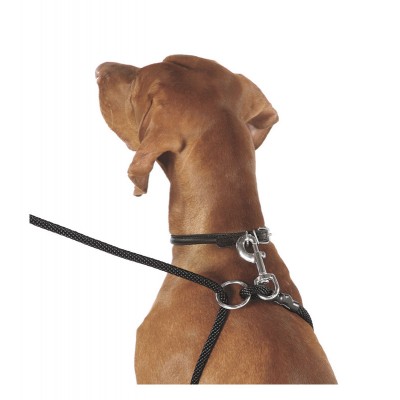Dogs pull in order to go somewhere they want to go. This means that you are not in control when they pull. Allowing them to pull, especially starting at a young age, tells them that it is okay to do so. This can cause shorter exercise time or none at all. Once the dog has started to lose his needed exercise time, he can gain weight or obtain other undesired behaviors.
Rewarding your dog for good behavior is vital in leash training. If the dog stops to look at you, treat and praise. Another way to work on the problem is to stop where you are until the leash is loose. Once the leash is loose, treat and praise, and then you can continue the walk. This is telling your dog that when he pulls, you will not move.
This is a skill that takes time, patience and consistency. If you find your dog is having a difficult time with this exercise, the environment may be too distracting. Try a quieter area, higher quality treats, or invest in training harnesses or collars. Below are some of the recommended tools:
The Weiss Walkie

The Weiss Walkie comes in two different sizes; one for dogs under 25 pounds and one for 25 pounds and over. In order to use the Weiss Walkie, your dog will need an appropriate fitted collar. You will then attach the snap to the D-ring on the dog’s collar, wrap the leash behind his front legs, and pull the handle through the loop by the snap. This will tighten as the dog pulls and loosen as he relaxes. The Weiss Walkie was built to apply pressure without having buckles and many attachments. It is very simple and quick to put on.
The Gentle Leader

The Gentle Leader comes in two different options; the head collar or the harness. Both are designed to encourage the dog to stop pulling, lunging, and will still allow them to comfortably do activities (eat, drink, pant). The head collar is NOT a muzzle and will need adjustment time. The harness can be a bit tricky to put on at first, but once on, you will snap your leash to the front (chest area) and if your dog pulls, the harness is built to pull them to the side. This helps keep the dog from wanting to pull as they do not want to be pulled to the side. If you have a dog that likes to pull we recommend a front clip harness and NOT a back clip. Back clipped harnesses encourage dogs who haven’t mastered the loose-leash to continue to pull.
The Martingale Collar
If you have a dog that can easily slip from a collar or has a neck larger than their head, the Martingale is a great tool to use. It is designed just like a normal collar, but has an additional loop with two D-rings instead of one. You are able to attach the leash to both D-Rings. When the dog pulls forward, or back, the collar will tighten.
There are many different options to use when training your dog not to pull on a leash. Please contact us for any additional information or questions.






